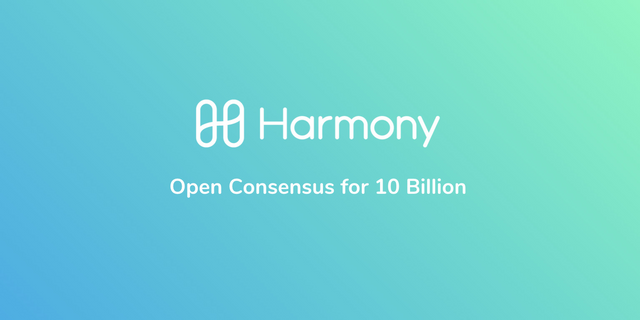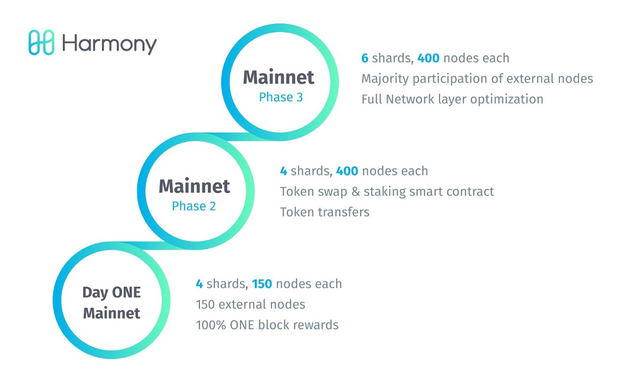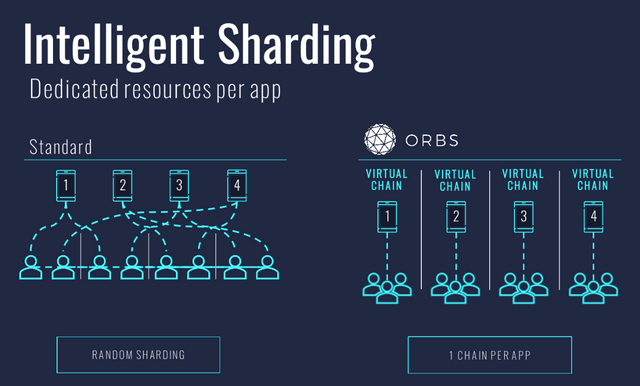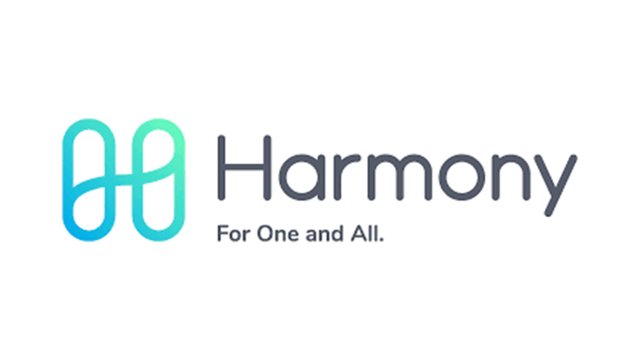Harmony Blockchain - Spearheading Scalability With Unique Sharding Technique
Introduction

In the world of decentralized Computing the more nodes are operating on a blockchain, the more decentralized the blockchain is said to be, Harmony blockchain has 600 nodes in its mainnet making it one of the top 15 most decentralized network in existence. Harmony is a proof of stake blockchain characterized by its superfast transaction speed and it is highly scalable, it is also provably secure and energy efficient.
The Harmony blockchain mainnet was launched on June 28 2019 and has since been through thorough development to further decentralize the network with plans of a Phase 2 launch which will add 1600 more nodes to its network which is only possible by the means of the technological term referred to as Sharding. This will be further discussed subsequently.

The team in charge of developing the Harmony blockchain technology are well-known tech-enthusiasts, engineers and business minds who stem from a body of experts referred to as Crypto-Mafias, these highly-skilled individuals put their heads together to deliver exceptional products and services and Harmony blockchain is just one of such.
Solving Scalability Issues With Unique Sharding Protocol

One of the major problems facing blockchain project is scalability, the ability of a computing process to be used or produced in a range of capabilities. As a blockchain grows its main objective is to continue to meet market demands and for such business its technology has to be able to accommodate more data and resources. A lot of times blockchain projects fall into unforeseen scalability issues which may result in poor system performance requiring re-engineering of the entire system.
A very typical example of scalability issues can be found in the Ethereum network as a result of the increasing user base which was brought about by Cryptokitties and the DeFi(Decentralized financial application). Although the large user base and continuous growth should be a good thing, it only means its scalability issues are getting worse for Ethereum. Harmony blockchain poses as a solution to this shortcoming at least for the De-Fi application and will further go into partnership with the originators of Cryptokitties to build an ecosystem of crypto assets.
What makes Harmony blockchain so spectacular and exceptional besides its unmatched speed is its Sharding technique applied in the blockchain mechanism. Sharding involves breaking down of computational assignments into small chunks called shards, this process makes it super easy to process and execute those assignments. Along with this Sharding technique, it also employs what is called a Beacon chain protocol, the beacon chain itself processes transactions like the standard shard chains, but with two major functions which are monitoring stakers and generating numbers for transaction validators, this further secures the blockchain annulling malicious activity.

Pangaea
Harmony has a test net called Pangaea for interested users who will like to participate in the ongoing developments and earn rewards for their participation. Pangaea is an experimental zone for thousands of people to interact with the Harmony network, test the limitations of our technology and have lots of fun while earning rewards. Pangaea is created purely for experimental purposes. It will have its own currency for playing and bookkeeping. Source
Comparing Harmony Blockchain to Existing Blockchain Projects
In the world of blockchain technology the first revolution to take place was the Bitcoin a POW blockchain, but it had its issues in speed, the first hundred users probably did not see it as a problem, but as it expanded in user base and increased number of transaction people began to see the shortcoming, this spurred programmers from around the world to procure a solution this led to the creation of different blockchains from different professionals since the bitcoin blockchain is open source, it could be written on and forked to become something else, one of the most astounding projects to arise was Ethereum with tremendous results and also the ability to empower smart contracts, however, as it also expanded in terms of user base and amount of transactions and began experiencing hiccups, moreover, operation on Ethereum blockchain costs fees.

With Harmony Blockchain using Ziliqa, Omniledger and Rapidchain as benchmarks as Identified in the whitepaper here “Omniledger employs a multi-party computation scheme called RandHound to generate a secure random number, which is used to randomly assign nodes into shards. Omniledger assumes a slowly 4 adaptive corruption model where attackers can corrupt a growing portion of the nodes in a shard over time. Under such security model, a single shard can be corrupted eventually. Omniledger prevents the corruption of shards by reshuffling all nodes in the shards at a fixed time interval called epoch. RapidChain builds on top of Omniledger and proposes the use of the Bounded Cuckoo Rule to reshuffle nodes without interruptions.”
It makes me wonder after scaling and solving transaction problems, what about fees for operating on the blockchain? Which leads me to referring to Steem which has solved all these problems and is far ahead in development than any other blockchain project. One of the most used blockchains today is the Tron blockchain, it is also lightning fast and scalable, but it migrated from the Ethereum blockchain which already tells me there will be more issues than meets the eye in the nearest future.
Conclusion
For me, its not enough to be revolutionary, that's what the existing blockchain technology has taught us, any serious team of professionals with access to enough funds can start up a blockchain that could be a 'revolution', but the strength of the project lies in its ability to surmount its problems, Harmony has hardly hit any major hiccup, and so its hard to tell of the strength of the project.
Thank you for reading.
Sources and to find out more about the Harmony blockchain, see the following links.
- https://harmony.one/
- https://harmony.one/pdf/whitepaper.pdf
- https://medium.com/harmony-one
- https://t.me/harmony_one
- https://twitter.com/harmonyprotocol
All images are from Harmony.one and others are duly specified.

Posted from my blog with SteemPress : https://steemhosting.com/kilimanjaro/?p=22
Hello there, This is a very interesting review.
This part really caught my attention. You are actually very right about it. I can list out some blockchain project that promises to be "revolutionary" but only has a short time solution or vision. Harmony blockchain seems very interesting on the other hand. I may need to research more to know better.
Thank you for using the realityhubs hash-tag. I look forward to your next review.
Cheers!
RealityHubs Mod
Thank you, I appreciate your feedback...
Bless
Hello, @mistakili
This one is a new thing for me. Nice to see the good format on this review. Keep up your great review.
Regards,
[RealityHubs Curator]
Thanks for your feedback, I appreciate.